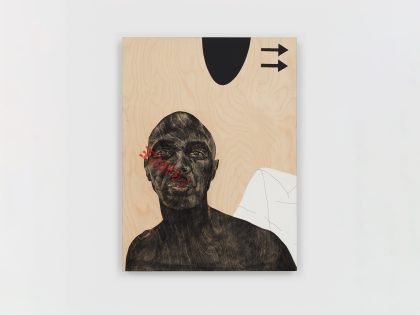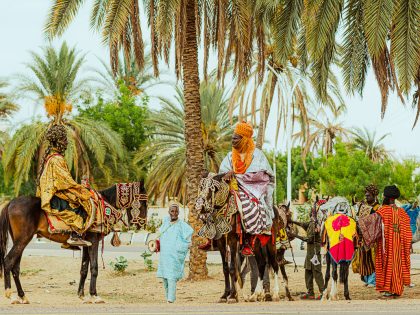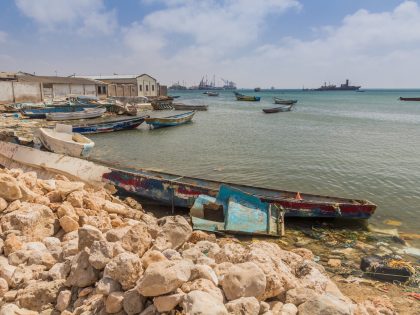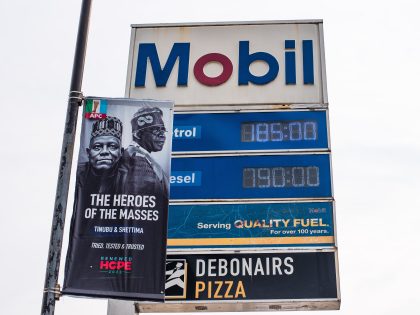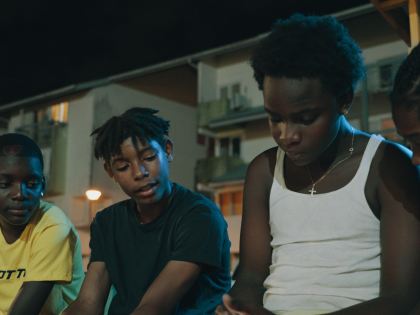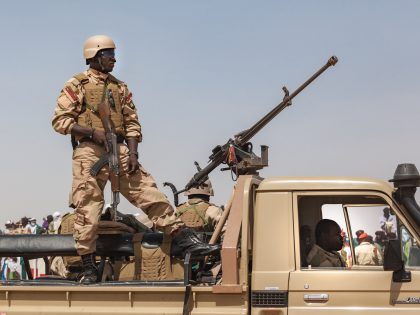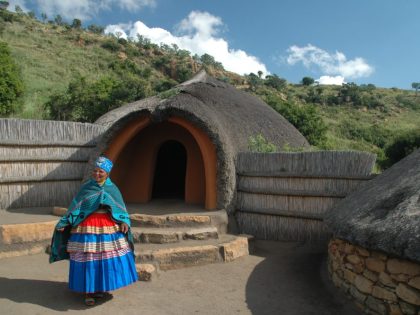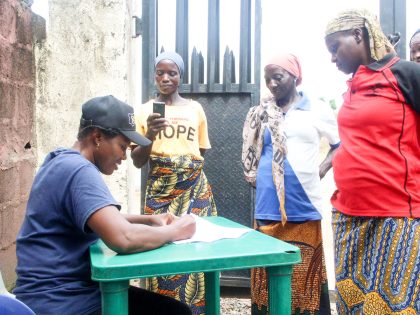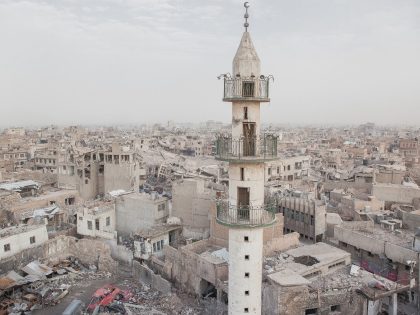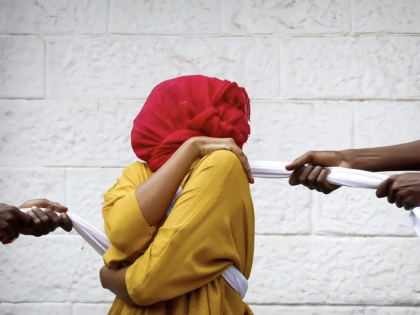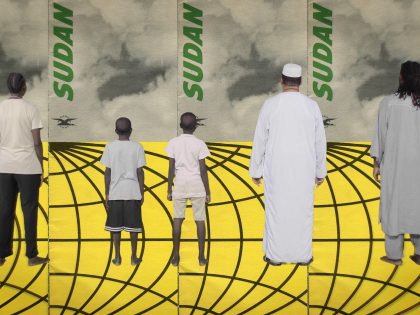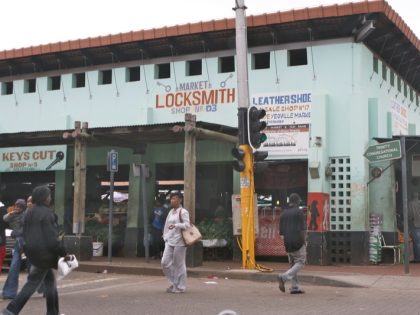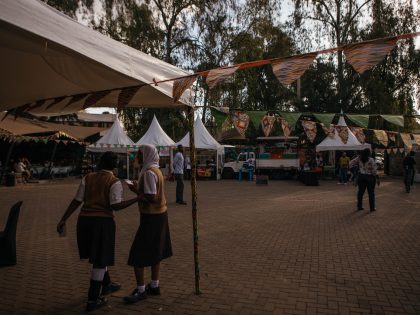When videos of abuses by police go viral in Angola
It marks the first time that videos went truly viral in a country in which only about 5% of the population has access to the internet.

A mural of Jose Eduardo dos Santos, Angola's longtime president, and of his party, MPLA. (Photo: Oscar Megía, via Flickr CC).
For the past two weeks, most Angolans that frequent Facebook and other social media sites viewed and shared two particularly gruesome videos. One showed prison officials severely beating incarcerated men in the Comarca de Viana (Viana Jail), while the other, even more heinous, showed several men brutally beating and abusing two women who had allegedly attempted to steal a bottle of Moët & Chandon from the shop the men owned. The latter video lasts 13 long, uncomfortable minutes and among its more difficult scenes is the one in which an attacker forcibly kisses one of the women while the others laugh, and another in which the shop-owner beats the women with the blade of a machete. The video shows several men participating in the beating, while others, including women, stand by and watch while egging on the attackers. Both videos went viral in Angola.
Both evoked very strong emotional reactions, particularly the second video. Within a matter of days, both had been mentioned on state television and talked about in public and private newspapers. It marks the first time that videos went truly viral in a country in which only about 5% of the population has access to the internet.
The videos come at a sensitive time. People continue to be shocked at the level violence permeating Angolan society. The torture and murder of a popular and well-liked teen last year at the hands of his teenage friends — which prompted a march against violence along Luanda’s new Marginal — is still fresh in many people’s minds. But the most remarkable outcome of this mass sharing of media was that the Office of the Attorney General, or Procuradoria Geral da República (PGR) as it is locally known, actually did something about it. And they did it publicly and swiftly.
This comes fresh off the government’s unexpected condemnation of the Brazilian Igreja Universal do Reino de Deus (Universal Church of the Kingdom of God) and the PGR’s launch of a criminal investigation against the politically well-connected Church for the stampede that killed 16 faithful at a New Year’s event in Luanda, the PGR, has once again positively surprised Angolans.
Days after the prison video began circulating on Facebook and Club-K, the most widely read Angolan web portal, the PGR opened an official inquiry into the matter and suspended the prison warden along with several of his subordinates. Their reaction to the horrid woman abuse video was even quicker. As condemnation reached fever pitch on Facebook and YouTube, the PGR took to the airwaves to announce, on national television, that they had not only found the establishment in which the attack had taken place but had also arrested the culprits.
In effect, the PGR arrested citizens based on digital evidence that circulated widely in Angola’s fledgling social mediasphere. Such an act by an organ of state is completely unheard of in Angola, and caught many of us by surprise. The Angolan government, which likes to pretend we live in a democracy and carefully cultivates that illusion, still grapples with concepts such as “rule of law”, “civil liberties”, “press freedom”, and above all, “freedom of expression”.
Less than two years ago, at the height of the Arab Spring, President dos Santos scathingly denounced social media and as a direct result the ruling party unsuccessfully tried to introduce a bill in parliament that would make it illegal to share videos, pictures, and recordings without the subjects consent. As Louise Redvers reported for the BBC back in May 2011, “under the proposal … anyone criticizing the government on social media sites such as Facebook … could have faced up to 12 years of prison.”
The government’s sudden embrace of digital evidence circulated on social media is therefore even more extraordinary.
Throughout 2011 and 2012, the youth protest movement Central Angola 7311 tried to use social media to highlight the ongoing, state-sponsored abuses against friends and members of their group. The nadir of this violence occurred when opposition leader Filomeno Vieira Lopes was struck on the head with an iron bar during a protest in broad daylight in the presence of police officers who did nothing; other members of the movement, most not older than 30, suffered severe head wounds as they were attacked with iron bars and sticks.
These thugs, which locally came to be known as ‘militias’, grew so brazen that they even took to pre-emptively attacking the protest organizers in their own home on the eve of a planned protest; the blood-caked floor of organizer Carbono’s house was featured on the Al-Jazeera documentary about Angola’s protest movement. And Mbanza Hamza, also featured prominently on the same documentary, still sports a deep, permanent scar that runs along his head, borne out by the iron bar of some government thug drunk on irrationality.
The police and thug violence became a regular fixture of anti-government protests. It was regularly filmed by passersby and protesters on their mobile phones. Several of these videos made their way to YouTube, Facebook and the movement’s website. All of them were then sent to PGR, time and again, to help them find those responsible. The PGR never uttered a word about them and never acted on the evidence they received. Instead, the state prosecuted the youth involved in the protests and wrongly accused them of attacking police officers. The video evidence, which not only directly contradicted the accusations but actually distinctly showed that the police acted in tandem with the thugs that beat defenseless citizens, was, inexplicably, inadmissible in court. The defense attorneys representing the protesters described the court proceedings as a “tragicomedy”.
Most of the accused spent 43 days in Viana Jail for crimes they did not commit. Coincidentally, it’s the same jail featured the prison described above. Additionally, two citizens, Isaías Kassule and Alves Kamulinge, have been missing since May of last year for participating in anti-government protests. Their disappearance is one of the most talked about topics in Angolan social media and has even prompted further protests. Astonishingly, the PRG recently told national television that they “had no idea about the disappearance” because “they do not follow independent media.”
In reality, the violence in Angolan society so visible in a time of peace is nothing new. Instead, people that would normally not be aware of it now have no choice because it shows up on their Facebook newsfeed. For the violence in Angola comes from the very top: the State.
Just last week for example, the government forcibly evicted 5000 people from Luanda’s Cacuaco district without previous warning. The evicted included pregnant women, infant children, and two children who died by falling into a ditch as they ran away from seven low-flying helicopters. Yes, helicopters, because the local government used helicopters (seven), bulldozers, and a 500-men force comprised of the police, the military and rapid-intervention security forces to forcibly evict people without warning.
With such an example coming from the top, is the violence in our society truly that shocking?
PGR’s actions are entirely commendable and deserve praise. I was one of many Angolans that took to social media to congratulate them on finally using a tool that has been at their disposal for years. Justice was done for the two women brutally abused, and the suspension of the Viana Jail warden was nothing less than the prisoners deserved. But it’s about time that these State Institutions started serving the country as a whole instead of the whims of a single party. The country, and its citizens, is changing. It’s time the PGR, and the rest of the government, wakes up to this new reality and starts serving the people they were given a mandate to serve. Because as long as the PGR picks and chooses which cases they solve, even their noteworthy actions will ring a bit hollow.





